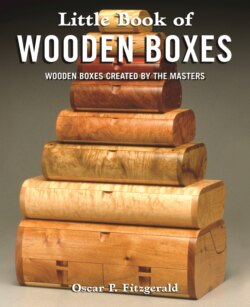Читать книгу Little Book of Wooden Boxes - Oscar Penn Fitzgerald - Страница 13
Boxes for Clothes
ОглавлениеMost clothing was folded and stored in boxes or chests, not hung in closets, until well into the nineteenth century. Hats required their own special boxes. Since the seventeenth century, special boxes protected hats fashioned of costly beaver pelts. Tricorn hats made of felt required triangular boxes usually of cardboard lined with newspaper. By the early nineteenth century, the tricorn was superseded by felt top hats with high crowns and narrow brims. The height of the crown and the width of the brim varied from year to year, much like the width of modern-day ties. Women, who seldom went bare-headed in the eighteenth or nineteenth centuries, stored their bonnets in special boxes too, along with their stylish ivory, horn, or tortoiseshell combs.
Although some of the cardboard boxes came with cotton bags to protect them, the most durable boxes were fabricated out of wood. Used mostly as trunks during travel, bandboxes fell out of favor as trains and steamboats replaced coach travel. For that, durable, leather-covered, wooden trunks decorated with brass tacks were necessary.
Descendent of the nineteenth century bandbox, this container with the E. Stone store label of New York City once contained women’s fancy dress accoutrements from the early twentieth century.
